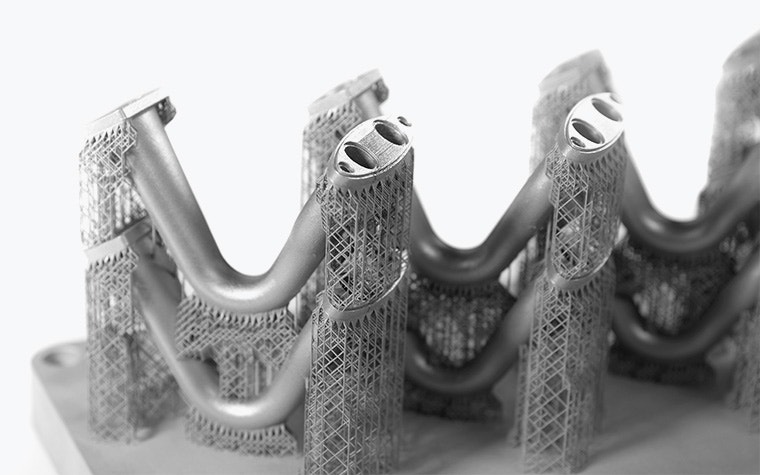EXPERT INSIGHT
3 Hidden Costs in Metal Additive Manufacturing (And How to Avoid Them)

Technology as revolutionary as additive manufacturing (AM) doesn't come without complexities. One challenge we see companies encounter time and time again is the hidden costs associated with the technology. They add up quickly because of the harmful "if it ain't broke, don't fix it" mindset. By focusing on stabilizing and controlling production, customers become comfortable with processes that aren't optimized for metal AM, and companies hinder themselves from achieving economically viable production. In this article, you'll learn which extra costs you should watch out for and how to avoid them.
1. Build plate resurfacing
In addition to the initial investment of around $1,000 per build plate, you should also keep track of the cost of resurfacing plates between builds. This expense falls between $150 – $300 each time, and if you opt for block supports, you incur this cost after every build. On average, most companies have to replace plates after resurfacing them 30 times, with a grand total of approximately $7,000 for each build plate's lifespan.
Multiply this by the number of plates you have in your production, and you can see how quickly the cost accumulates. But, you can minimize the extra costs with certain workflow improvements.
Thin support structures play a significant role in improving the reusability of build plates and the resurfacing process. e-Stage is a great example, automatically placing needle-thin cones that are quick and easy to remove from the build plate. This allows you to avoid backlogged queues at EDM or grinder stations, eliminating delays to your condensed timeline and cutting surfacing costs by at least one-third.
Let's break it down. If you rotate ten plates within your production and each plate costs $7,000 altogether, you're saving upwards of $23,000 each year. On top of that, you won't have to purchase as many plates, and the savings keep adding up.


2. Material management
Conventional supports for metal AM have another victim: excess powder trapped within. Metals are costly, so you need to ensure you're saving as much material as possible. Even with fragmentation, conventional supports make it almost impossible for the powder to be reclaimed within the machine. Excess powder even poses health and safety threats — particles flung into the air can be a fire risk and hazardous for the health of your operators. If you use EDM in post-processing, unsintered powder could even cause the wire to short and break.
Again, thinner supports are the way to go. e-Stage creates open lattice structures so the powder easily falls out, allowing you to recoup as much as possible.
3. Ancillary equipment
Ancillary equipment requires a significant investment, regardless of whether you complete post-processing in-house or outsource it. Tools that remove support structures — such as EDM machines or bandsaws — need that initial investment, plus maintenance costs. And you can't forget the labor expenses involved in finishing parts, either. If your process is inefficient, you're paying for every extra minute your team needs to remove bulky support.
On top of this comes resource management. All these workflows need careful planning, and if it's not done properly, you could even halt production while waiting for a build plate to become available.
Here, too, we see the need for thin supports that greatly accelerate post-processing. To illustrate, we tried a side-by-side comparison of e-Stage support and conventional support. Where operators needed a minute and 30 seconds to remove parts from a plate with the bandsaw when conventional support is used, operators could achieve the same result in just 14 seconds with e-Stage structures. This 90% reduction not only speeds up your workflow but also extends the lifespan of your bandsaw — equipment that can cost up to $600.
It ain't broke, but let's fix it
Don't let this mindset prevent progress in your production. We're constantly developing AM software to make processes more efficient, particularly for metal. To make your production as economical as possible — from data preparation to post-processing — find the inefficiencies that are racking up hidden costs and combat them with software that removes the compromise between part quality and your budget.
Share on:

Meet the author
Chris Jastrzembski
You might also like
Never miss a story like this. Get curated content delivered straight to your inbox.
